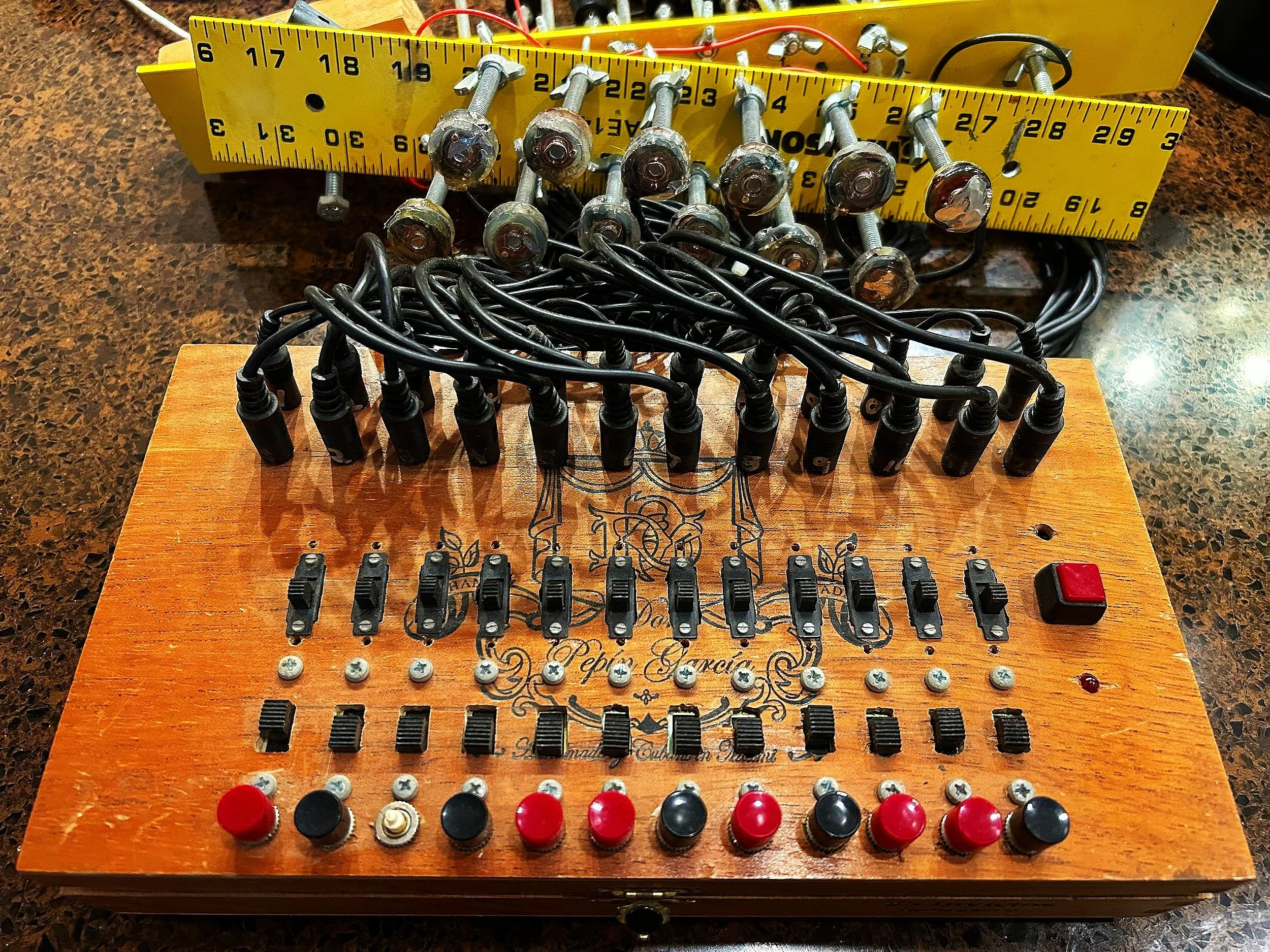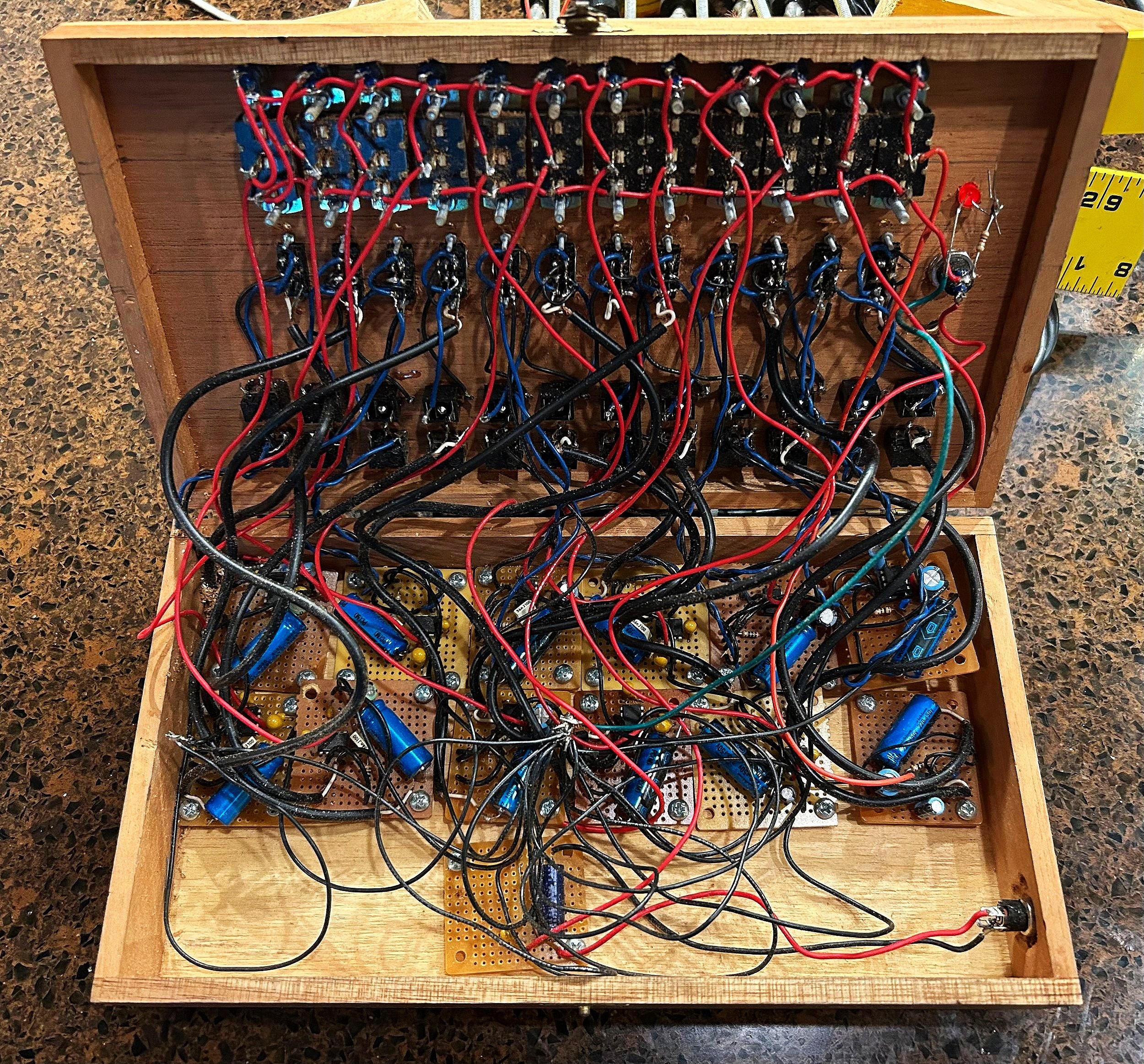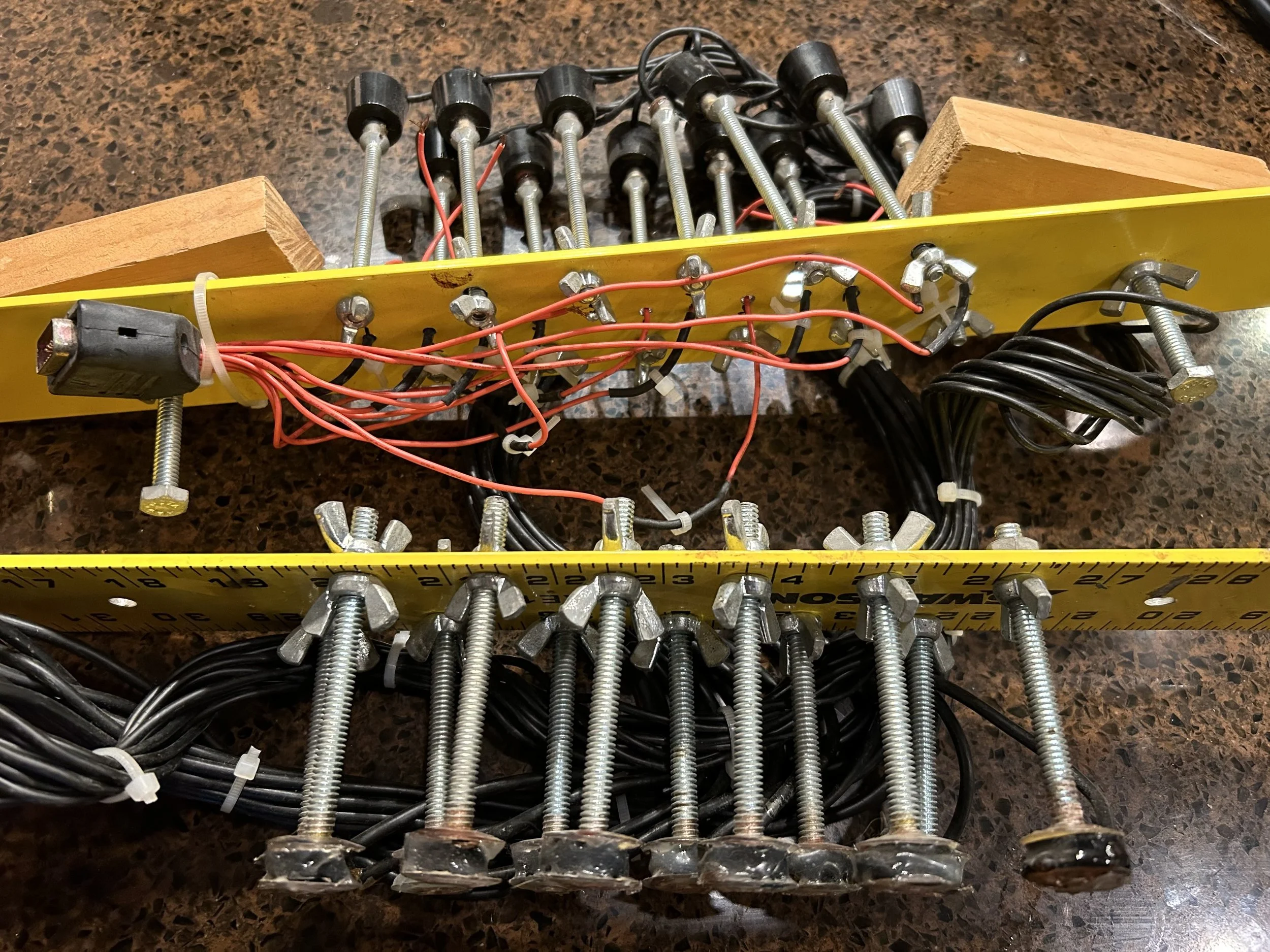Spectrogram of Otomo Yoshihide and Sachiko M’s performance at The Stone on April 14, 2015, with section boundaries and numbers added.
Keith Rowe’s instrumentarium with AMM at the Huddersfield Contemporary Music Festival, November 29, 2015.
Searching for Sounds: Instrumental Agency and Modularity in Electroacoustic Improvisation
My doctoral dissertation research focuses on the practices of electroacoustic improvisation and what these practices suggest about the nature of instrumentality. You may download the dissertation here, and/or if you’d rather be persuaded or dissuaded from doing so, feel free to first read the abstract:
In their radical departure from conventional instrumental technique and standardized instruments themselves, the practices of electroacoustic improvisation present a particular challenge to prevalent Western concepts of musical instruments. These concepts—which generally treat instruments as fixed objects—are ill-equipped to account for the ways in which electroacoustic improvisers foreground the agency of their instruments and abandon the quest for “mastery” typical especially of classical attitudes. Additionally, electroacoustic improvisers often approach instruments not as singular, self-contained, and static in their materiality, but rather as modular instrumentaria capable of myriad states and ever in flux, similarly problematizing conventional conceptions that view the physical constitutions of instruments as static and circumscribed.
After considering common concepts of musical instruments, presenting apparent failures of these concepts, and arguing for the necessity of a new organology, I introduce the practices of electroacoustic improvisation, situating their emergence in Group Ongaku (formed in Tokyo in 1958) and AMM (formed in London in 1965). Drawing from the writings and interviews of the musicians of these groups, I suggest several significant attributes of electroacoustic improvisation, including the formative influence of electronics, the incorporation of free improvisation, the tendency toward a composite group sound and away from featured soloists, and especially the ways in which electroacoustic improvisers cultivate instrumental agency and modularity. After tracing connections between the development of these practices and their flourishing in the work of subsequent generations of improvisers in Berlin, Boston, London, Tokyo, Vienna, and elsewhere, I examine how these practices reveal themselves in performances by contemporary electroacoustic improvisers, paying particular attention to the dynamic relationships performers exhibit with their instrumentaria. At the heart of this study are in-depth analyses of three performances: first, a performance by the longtime duo of Otomo Yoshihide and Sachiko M; next, a first-time collaboration between Olivia Block and Maria Chavez; and finally, a performance by AMM celebrating their fiftieth anniversary. In presenting these analyses, I attempt to focus attention on a significant movement in contemporary creative musical practices and suggest ways in which these practices may be understood. I furthermore propose concepts of musical instruments suitable for addressing the ways in which these musicians use them but that can also be applied to uses of instruments in diverse situations. I argue that, although electroacoustic improvisers foreground instrumental agency and modularity, these aspects always already exist in myriad contexts.
The Respect Sextet
The Respect Sextet is a collective ensemble formed in 2001, with Josh Rutner (tenor saxophone + toys), Eli Asher (trumpet + toys), James Hirschfeld (trombone + electronics), Malcolm Kirby, Jr. (bass), and Ted Poor (drums + percussion). The Respect Sextet has been called “a group which has released one of the most compelling recordings of the year” by the Wall Street Journal and “one of the best and most ambitious new ensembles in jazz” by Signal To Noise. Check out respectsextet.com and respectsextet.bandcamp.com.
Part of the electronically prepared piano, in performance with the Respect Sextet at Caffe Vivaldi.
Electronically Prepared Piano
The electronically prepared piano was used on my duo recording with Ryan Ferreira, Figure, as well as in the realization of ClangGarden on the media page. Above are photos of parts of it, with twelve electromagnetic pickups, twelve electromagnetic drivers, and twelve LM386-based amplifiers. Not shown is an octave-long electromagnetic driver, transducers, vibration motors, and speakers. I’m currently working on a revision, aiming to retain the simplicity and portability of the original, while optimizing the design and implementation.
Performing on the Respectron #2 with the Respect Sextet at the Brooklyn Lyceum.
Respectron #2
This instrument uses layered force sensitive resistors and membrane potentiometers to control synthesis in Reaktor and Max/MSP; used in performances and recordings with the Respect Sextet.
Analog Modular Synthesizer
Details forthcoming.
Max/MSP instruments
Numerous implementations of synthesis techniques and digital signal processes, including granulation, pulsar synthesis, dynamic stochastic synthesis, waveset distortions, and many more. Details forthcoming.
Building a Cracklebox
I’ve taught a few groups of students in Douglas Geers‘ Building Electronic Musical Instruments classes at Brooklyn College how to build a Cracklebox.
Directions on how to build a Cracklebox
OSH Park PCB (Note: I’ve since laid out a better PCB, but this works fine and is the one referenced in the above PDF.)








